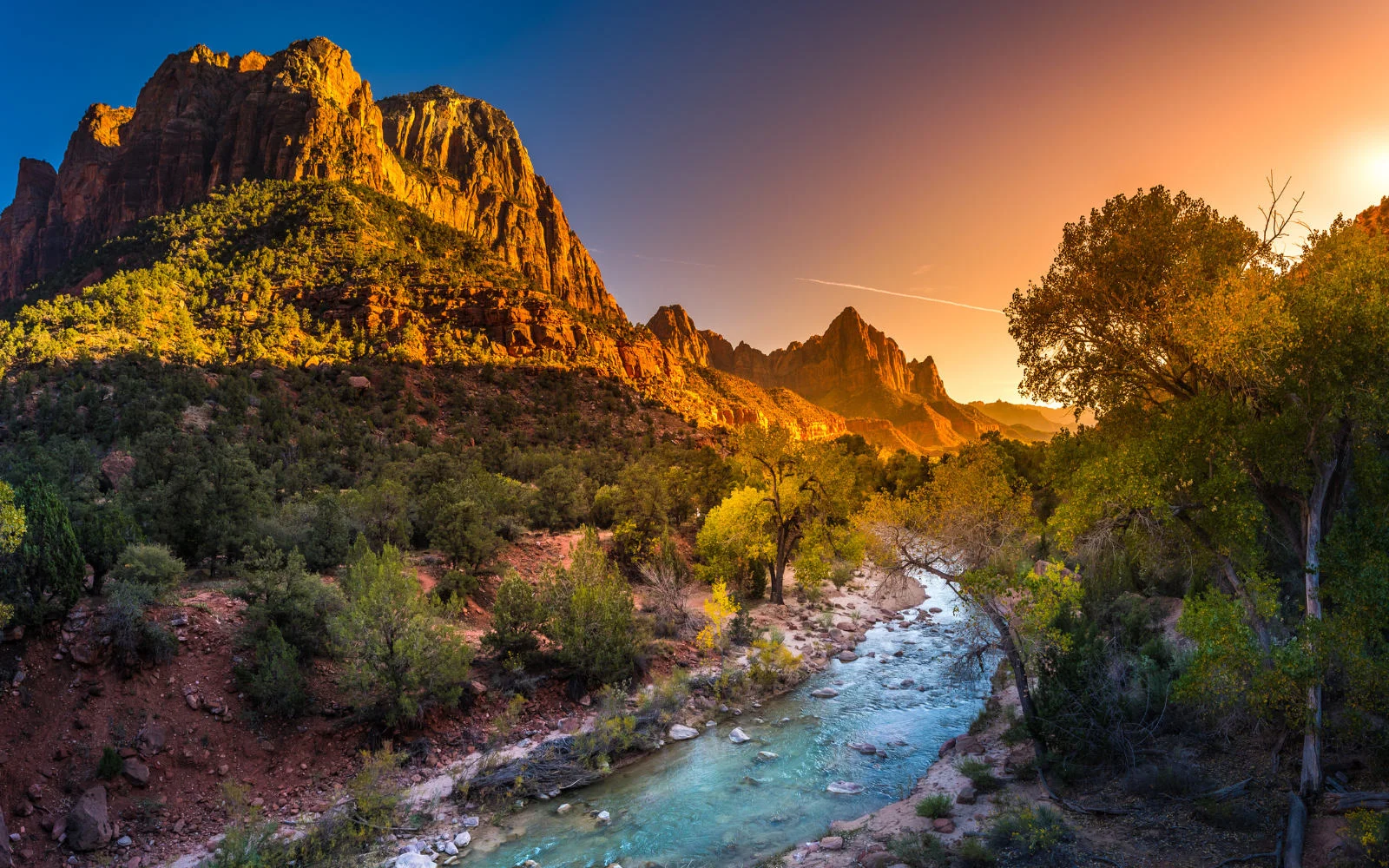What's the best time to visit Utah National Parks?
The best time to visit Utah’s national parks is in late spring or early autumn when you get the perfect mix of mild weather and fewer people. This makes it just right for hiking and soaking up the natural beauty, from spring blooms to fall colors, without the hassle of summer crowds. Plus, everything you need, like campsites and visitor centers, is open and ready to welcome you.
Utah’s national parks are some of the most spectacular in the entire United States and attract millions of visitors each year. All of the national parks have spectacular rock formations and landscapes but are slightly different.
Arches National Park has deceptively delicate rock arches, while Bryce Canyon has steep rock formations and canyons of multicolored rock. Zion National Park is probably the most famous. Capitol Reef and Canyonlands are less well known but have landscapes that are just as beautiful.
All of these parks are worth visiting no matter the time of year, but certain seasons are more pleasant. We’ll show you the best time to visit (and more) below; let us be your guide!
Overall Best Time to Visit Utah National Parks
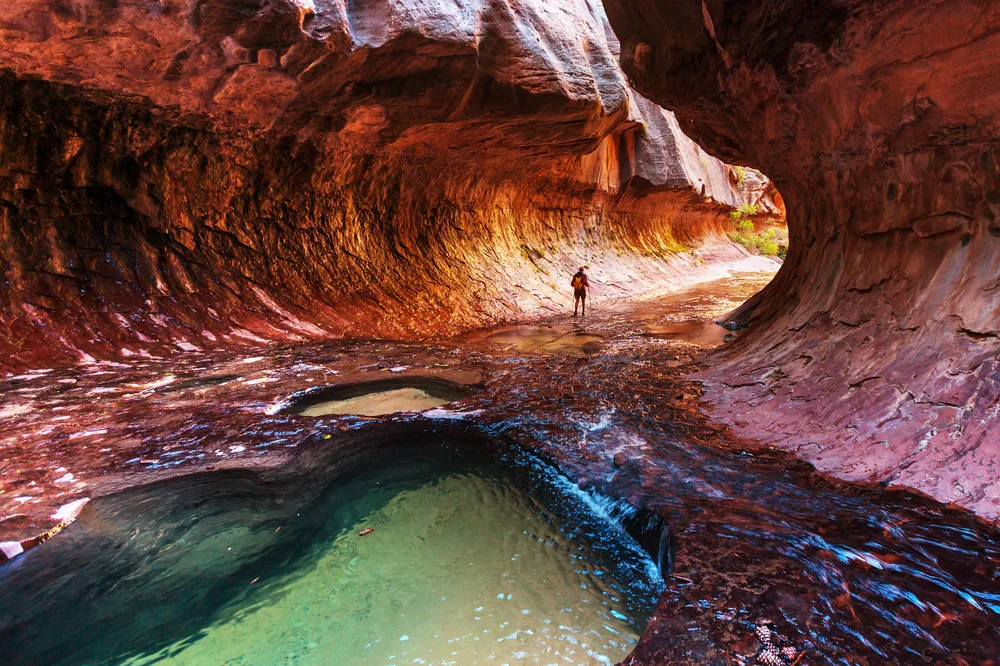
Galyna Andrushko/Shutterstock
The best time to visit Utah’s national parks is in the late spring or early autumn, when the temperatures are more comfortable for walking around and there are far fewer crowds.
Utah’s national parks, sometimes called the Mighty 5, are all located in the southern part of the state. This part of the state has an arid continental climate. The four seasons have distinct weather and extreme temperatures, with very hot summers and very cold winters.
By contrast, spring and autumn bring milder temperatures, making it a lot easier to get around and engage in adventure activities like hiking. For example, average high temperatures in Zion National Park in April are a pleasant 75 degrees Fahrenheit, while they hover around 79 degrees in October.
The weather in the shoulder season is also drier than it is in the summer, when most people visit. In Canyonlands National Park, April, May, September, and November all have far less rainfall than the summer peak season.
Not only is it more pleasant to go hiking when the sun is shining, but it is also safer because you are at less risk of flash floods in low-lying areas.
During the shoulder seasons, amenities like visitor centers and accommodation options are open as opposed to during the winter, when many places shut down completely. This gives you more options for things to do and where to stay.
For example, all of the campgrounds in Bryce Canyon National Park are open from April to October. Ranger-led programs like those in Arches National Park tend to start in April and May and run until the fall.
Finally, by visiting in the spring or the fall, you beat the worst of the crowds, which are at their worst in the summer. That makes it a lot easier to visit since you won’t spend time struggling for parking or to find a free campsite. Plus, it makes being out on the trails more special.
The landscapes are beautiful during these seasons. In the spring, wildflowers bloom, adding extra color and life to the desert. Fall brings sparse yet gorgeous foliage, especially to Bryce Canyon.
Conditions are ideal for outdoor activities such as:
- Hiking
- Camping
- Backpacking
Cheapest Time to Visit Utah National Parks
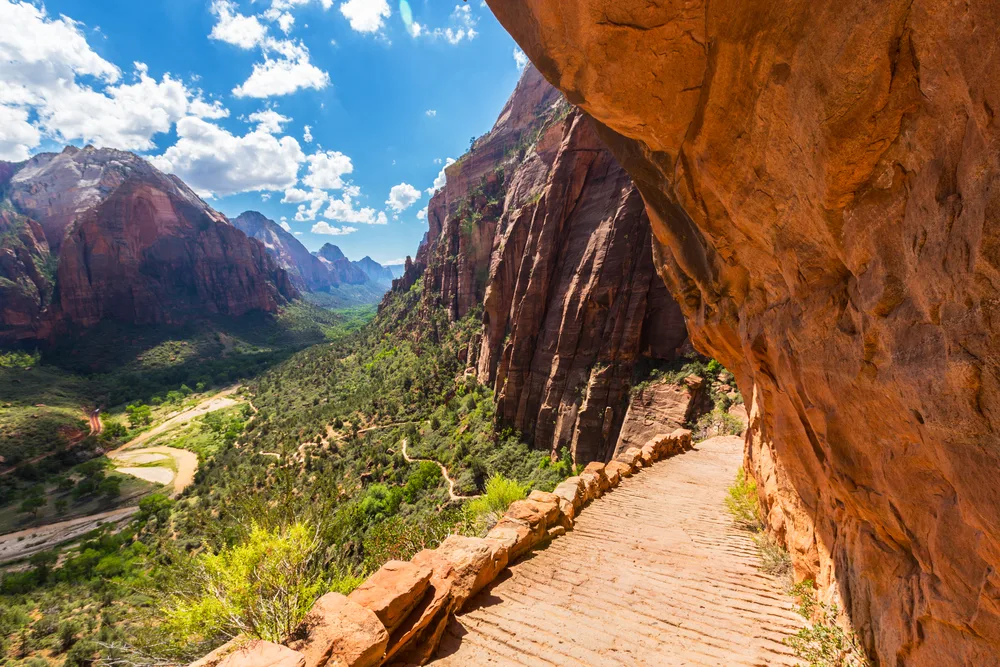
Calin Tatu/Shutterstock
The cheapest time to visit Utah’s national parks for discounts is in the winter, since nearby accommodation options tend to offer discounts. During this time, accommodation options within the camps themselves are limited.
Most campsites shut down for the season (not that you’d want to camp outdoors during the bitterly cold winter anyway). Some lodges and hotels also shut down for the season.
The hotels and lodges that remain open, both within the parks themselves and in nearby towns, offer steep discounts during the winter since southern Utah sees very few visitors during this time. Zion Lodge offers rooms for nearly $100 less than they cost during the peak season.
If you prefer to stay outside of the parks themselves, nearby towns that live off of tourism to the national parks also offer discounts during the low winter season.
Moab, which is a town that people use as a base to visit Arches National Park and Canyonlands National Park, offers hotels at 25% to 30% lower rates than during the peak season. Getting to the parks is also cheaper in the winter.
The closest airports are Las Vegas and Salt Lake City. November and January are the months with the cheapest airfare for both airports, although you can also find good deals for Salt Lake City in early spring. During the off-season, you can also find good deals on car rentals.
Least Busy Time to Visit Utah National Parks
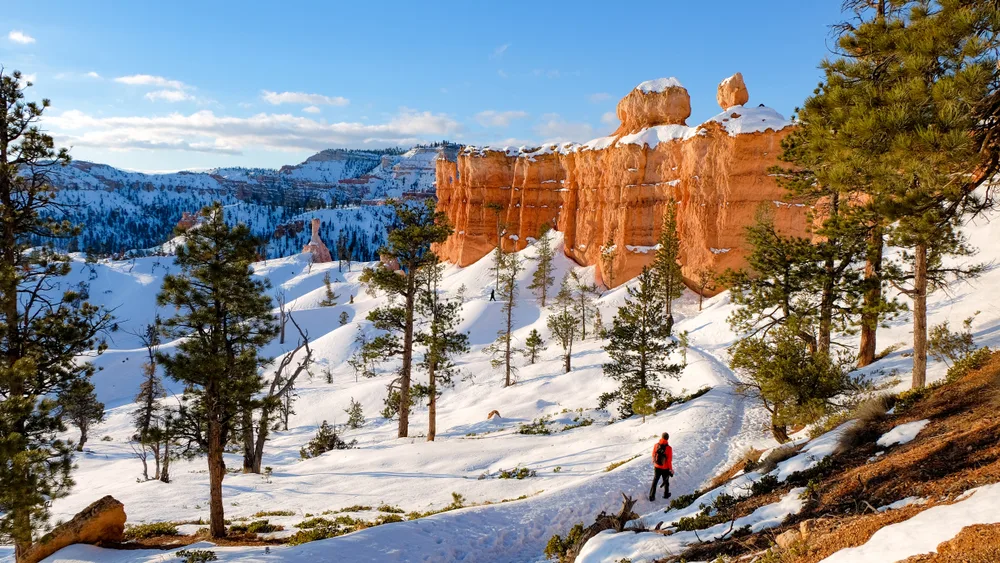
Ashley Hadzopoulos/Shutterstock
The least busy time to visit all of Utah’s national parks is the winter (November to February), when visitor numbers fall to a fraction of their normal amount. The official Utah tourism board helpfully provides a guide to visiting the national parks, along with estimated visitor numbers.
The tourism board actually recommends visiting in the winter to beat the crowds, since each park receives only a fraction of its total annual visitation in the winter, a far lower proportion than other seasons:
- Arches National Park: 14%
- Bryce Canyon National Park: 9%
- Canyonlands National Park: 12%
- Capitol Reef National Park: 10%
- Zion National Park: 17%
What these numbers mean is that you can go hiking in the winter through these parks and often have the trails practically to yourself. It is true that winters in this high desert region are harsh, especially at higher elevations.
Average nighttime temperatures in Bryce Canyon National Park in the winter are 15 to 17 degrees, and temperatures rarely go above freezing even during the day.
However, as long as you prepare well, you can have a great time hiking in the winter in these parks. Wear warm layers and heat gear. Make sure that your shoes are sturdy; for higher elevations, you may even need microspikes.
If you take the extra time to prepare, you’ll be rewarded with spectacular views. The red rock formations are even more beautiful when dusted with snow. Some parks even offer opportunities for winter activities like snowshoeing.
Worst Time to Visit Utah’s National Parks
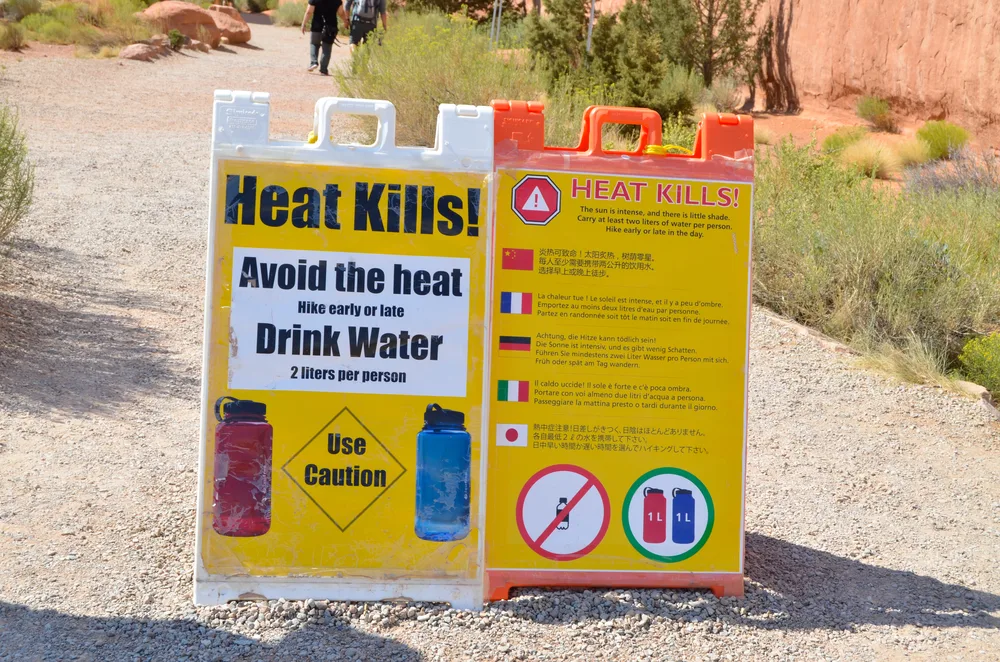
Ece Chianucci/Shutterstock
The worst time to visit Utah’s national parks is the summer, which has unbearably hot weather and crowds that are even more unbearable.
Utah’s national parks are all located in the desert, which means that you can expect very hot summers. Canyonlands National Park has the most extreme weather out of all of them, with average daily temperatures regularly reaching above 100 degrees Fahrenheit.
The other national parks also have very hot summer days, with average temperatures above 90 degrees Fahrenheit. Summer is also monsoon season in southern Utah.
The oppressive heat causes sudden thunderstorms to form, which can dump several inches of rain in just a few short hours and cause flash floods at lower elevations. These floods can be deadly.
Even though the weather is the worst around this time, summer is when most people visit, taking advantage of school holidays. Zion National Park even has a permit system for certain hikes and requires reservations for the park shuttle during peak season, when over 500,000 people visit per month.
The fight for parking and space on popular programming is intense, with many lots filling up by 9 am. If you have to visit in the summer, some precautions can help you beat the crowds.
Visiting very early in the day allows you to beat both the crowds and the heat. This is also a good season to visit Capitol Reef National Park, which has milder temperatures and hosts far fewer visitors than the others.
Frequently Asked Questions
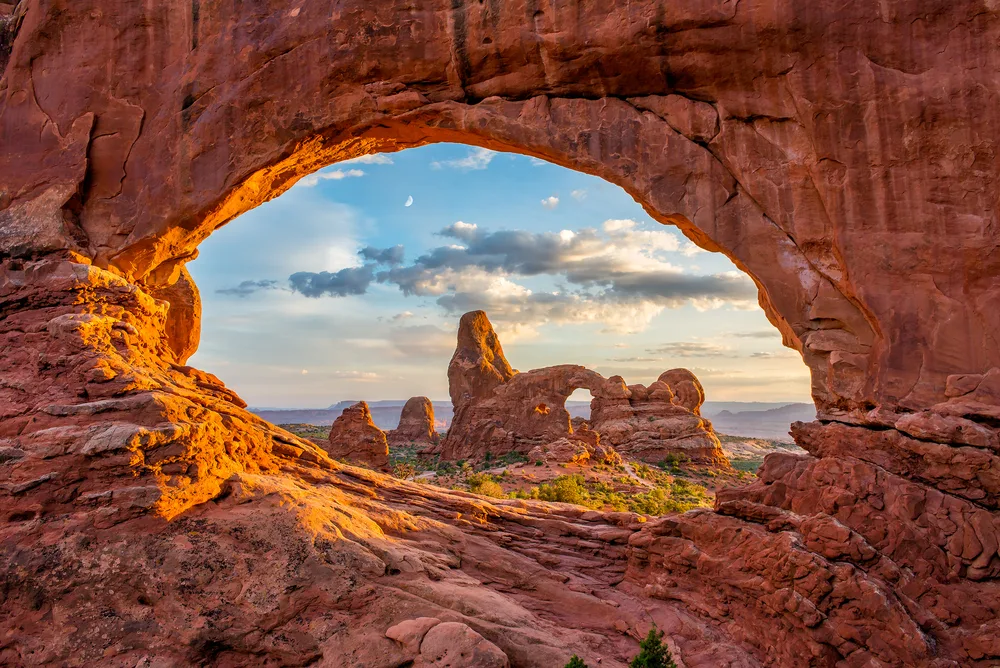
Anthony Heflin/Shutterstock
Here are a few additional questions to help you pick the best time to visit Utah’s national parks:
What is the best time of year to visit the national parks in Utah?
Spring is the best time of year to visit Utah’s national parks, thanks to fewer crowds but great weather and open amenities.
How many days do you need for Utah national parks?
You need 7 to 10 days to see all five parks, but even then, you’ll only see a bit of what each park has to offer.
What is the best time of year to go to Bryce Canyon?
Autumn is the best time of year to go to Bryce Canyon because the colors of the changing foliage are spectacular against the multicolored rock.
What is the best order to visit the Utah national parks?
The best order to visit the Utah national parks is as follows: Arches, Canyonlands, Capitol Reef, Bryce Canyon, and Zion. This is the most efficient road trip route.
What month has the best weather in Utah?
May has the best weather in Utah, with temperatures that are warm but not too hot and mostly sunny days.
So, What’s the Best Time to Visit Utah’s National Parks?
Utah’s national parks are most special in the spring and autumn, when the weather is relatively mild, the crowds are not as bad, and the landscapes come alive with wildflowers or changing leaves.
So, with so much to see and do and plenty of amazing times to go, what are you waiting for — book your trip today and experience for yourself all that Utah National Parks have to offer. Happy travels!



